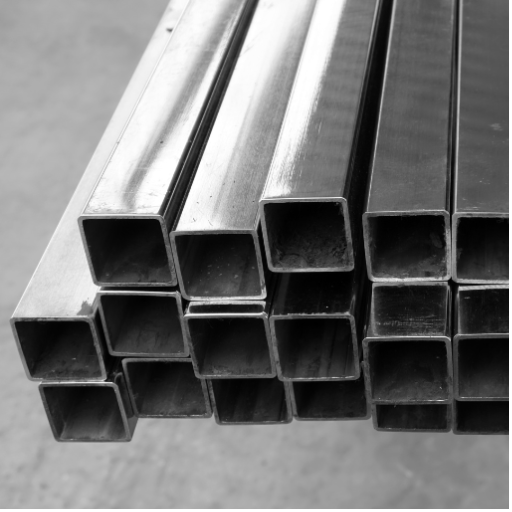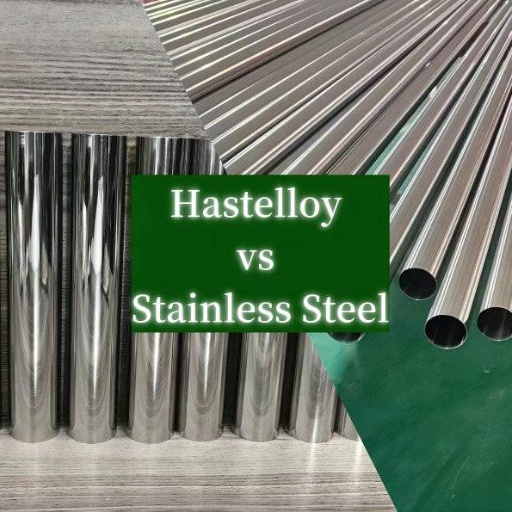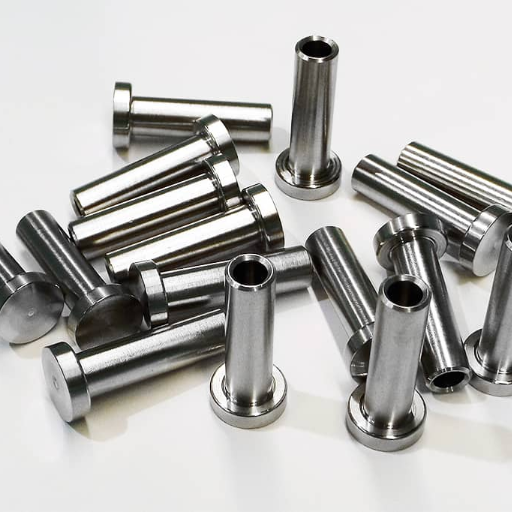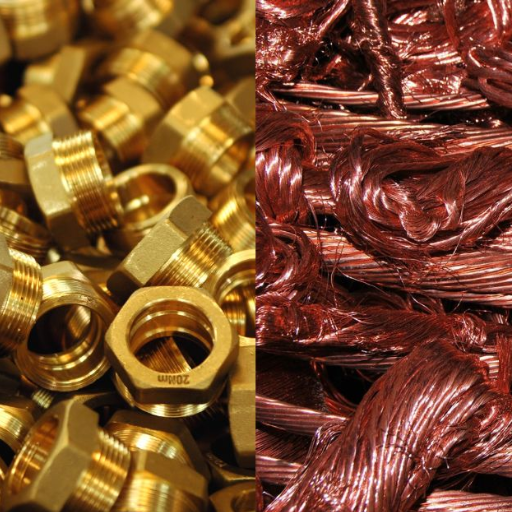In the universe of building and other industries, 304 stainless steel is widely recognized as a first-class. This is a consequence of a number of class-leading quality characteristics which make the product highly resistant to corrosion, a high tensile strength both of metals and non-metals, and its suitability to an extensive range of industrial applications. Big question, however, still hovers above: what is so amazing in this material, how different is it from other varieties of stainless steel, and what are the key properties, advantages, and constraints that can be attributed to it? In this paper, we will take you through a reveal of all the 304 Stainless steel information that you might require. This includes its chemical composition as well as its physical properties and most especially the specific application/ it provides within certain technical areas such as building and construction, the food industry, or the making of medical tools to the limit. Whether you are a professional in need of assistance in terms of materials or you would just love to learn how this alloy has become one of the core innovations of the present day, this write-up will satisfy all your curiosities.
Understanding 304 Stainless Steel
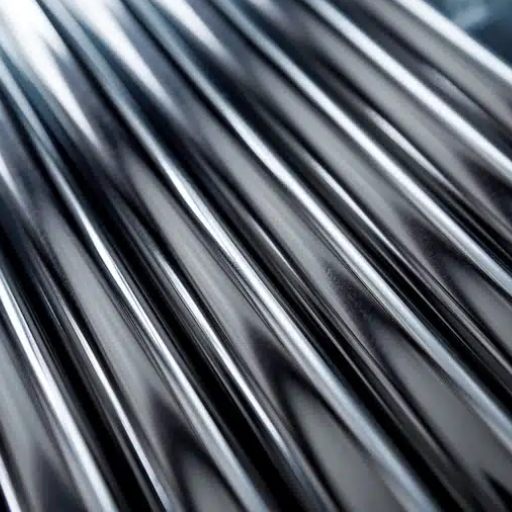
This information is about 304 stainless steel, the structural properties of which do not deviate much, except that it is an austenitic alloy made of iron with chromium in the range of 18-20% and nickel at 8-10.5%. This particular admixture is responsible for the good resistance to corrosion, as well as the physical properties of the stainless steel, such as its ability to withstand high temperatures. In addition, it has carbon, manganese, and silicon in the stage of enhancement, and carbon levels are also high. Also, it contains trace elements including phosphorus and sulfur. A passive layer at the surface protects due to the significant proportion of chrome, thereby eliminating rust and oxidation challenges, making 304 stainless steel goods highly demanded in many industries.
What is 304 Stainless Steel?
304 stainless steel is an austenitic grade of stainless steel, which qualifies as the most useful and widely used alloy among the stainless steels because of its complex structure. Its corrosion resistance goes with the high levels of chromium and nickel, which makes the grade ideal for situations with water, chemicals, acids, and other corrosive elements. With the outstanding properties of resistance to rust and oxidation, 304 stainless steel retains toughness and high tensile strength even when cooled at extremely low temperatures.
At age annealed, this alloy is not magnetic; cold working might cause slight magnetization. It exhibits distinct high machinability, tensile stretch, and crack extension formation sustainability properties, making it suitable for use in various industrial applications, including food and beverage equipment, the chemical industry, infrastructure, and automobile fabrication. Additionally, its health and cleaning benefits have made it suitable for use in the production of medical devices, kitchen utensils, and other areas that require impeccable facilities. 304 Stainless steel can also operate up to 870°C (1598°F) in continuous service, making it very convenient for use in various environmental conditions and practical for many applications.
Chemical Composition of Stainless Steel 304
- Chromium (Cr): 18-20%
Chromium, when included in an alloy, helps in resisting corrosion by producing a passive oxide coating on the metal’s surface.
- Nickel (Ni): 8-10.5%
Nickel provides additional properties such as stretchability, toughness, and oxidation resistance, especially at high temperature levels.
- Manganese (Mn): Up to 2%
In respect of the materials’ strength, hardness, and wear aspects, manganese serves the purpose effectively.
- Silicon (Si): Up to 1%
Adding silicon also helps in both terms of oxidation resistance and strength enhancement of the steel.
- Carbon (C): Maximum 0.08%
Use of carbon is necessary for balancing the strength and ductility of the material.
- Phosphorus (P): Maximum 0.045%
While it is used to improve machinability, the concentration of the detrimental processes inherent in corrosion protection necessitates the most stringent control of phosphorous content.
- Sulfur (S): Maximum 0.03%
Further, sulphur is known to enhance machinability, but it must always be taken into consideration so as not to lose out on the corrosion prevention.
- Nitrogen (N): Up to 0.10%
The addition of nitrogen contributes to solid solution strengthening as well as the stabilization of an austenitic phase of steels.
Physical and Mechanical Properties
- Density: 7.8 g/cm³
Further that, the density of an object ensures that the appropriate weight is achieved under structural considerations.
- Melting Point: 1400°C – 1455°C
Pure metals are melted at very high temperatures throughout manufacturing processes.
- Elastic Modulus: Approximately 200 GPa
Apart from withstanding heat, material toughness also indicates how effective the material will be in the service it will be subjected to. It demonstrates how well the material retains its shape and safety when subjected to external forces, such as pressure.
- Tensile Strength: 515 MPa – 750 MPa
This represents the upper limit of breaking stress in tension that the material can take it and deform it further before tearing.
- Yield Strength: 205 MPa (minimum)
Yield strength is more definitive and measurable because it shows the lower chamber where the deformation of the material sets in and properly holds it in place.
- Elongation at Break: 40% (minimum)
Geometric properties like Elongation are usually contained in an aspect of material diagnostics, which is aimed at evaluating the characteristics of the material in which the ability to yield into a plastic state occurs.
- Hardness: 160 – 190 HB
Hardness is determined using the Brinell tests, it makes sure the material does not deform or wear off due to other threatening factors.
- Thermal Conductivity: 16 W/m·K
Its high thermal conductivity ensures that it is transport appropriate for devices that are involved in thermal management.
- Electrical Resistivity: 0.73 µΩ·m
This property is responsible for controlling the electrical current that occurs through the material which is very important in electrical and electronic devices.
- Poisson’s Ratio: 0.27 – 0.30
Applications of 304 Stainless Steel
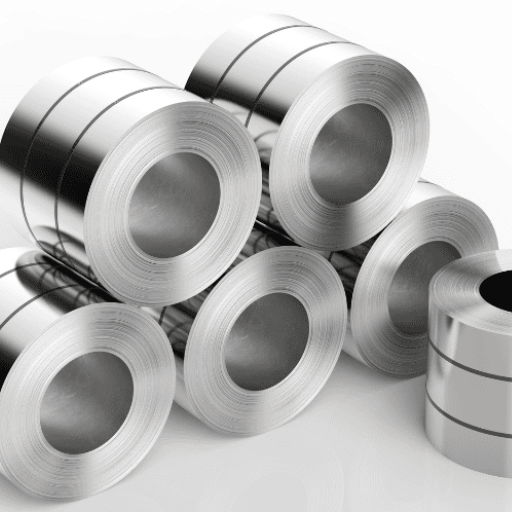
304 stainless steel has numerous uses across different sectors due to its vast array of activities, as well as its ability to suit the rugged environment.
- Food and Beverage Industry: In this regard, it is widely installed in the kitchen including washing utilities like sinks, counter tops, mighty utensils for cooking among others. It’s liked because it does not corrode easily and cleaning is made easier thanks to its property.
- Construction and Architecture: It is utilized during construction; in the making of windows and window facades, banisters, beams, and all other elements primarily because it has a long life span and is beautiful.
- Automotive and Transportation: It is rare to find an exhaust system for vehicles that does not have stainless steel trims at one point to enhance the looks. Also, stainless steel is very useful because it can remain tough and shiny even when high temperatures are used for cooking.
- Medical Equipment: The number, on the other hand, increases continuously, especially in the surgery field, as stainless steel has no pores and does not react with other metals, and it is commonly used in making high–aseptic level instruments.
- Chemical Processing: This alloy is employed for the working and refining purposes of chemicals, which makes use of the pipes, vessels, and conductors as stainless steel is resistant to their reaction conditions including high temperature effectiveness challenges.
1These characteristics highlight its adaptability and ensure its consistent use in demanding and varied environments.
Uses in Construction and Architecture
Stainless steel is used to define modern building techniques due to its reliability, look, and maintenance-free nature. It is used largely in such building elements as vertical structures that receive loads, as well as elements that are exposed to environmental conditions such as moisture and pollutants, due to its exceptional elongation properties. Roofing, cladding, or curtain wall practices also involve the usage of rust-free stainless steel, which ensures durability and low operating costs.
Such is the elasticity of the material that it does not lose any structural strength when subjected to hot weather. This allows the material to be effectively utilized in the construction of bridges, high buildings, and other structures positioned at the shoreline. Moreover, the adoption of lightweight, strong stainless steel components not only improves how one thinks about building construction designs but also pushes past emphasis on sustainable development. Its usability is further proven as the metal is recyclable, and helps in energy conservation, thus incorporating the existing environmental protection codes in the construction and architectural sectors.
Applications in Food Processing
- Processing Equipment
Stainless steel is applied in the fabrication of equipment, for instance, mixers, grinders, blenders, among others. The material ensures that it is usable whenever it is needed, and the cleaning is done using strong cleaning substances, and the temperatures are very high most of the time.
- Storage Tanks
The types of products and the raw materials, such as milk, wine, beer, and juices, are stored in most cases in large stainless steel tanks. Stainless steel is inert which enables these products to be held in the tanks without any fear of chemical reactions that may influence the quality of the stored products.
- Conveyors and Transport Systems
Production lines within the factories have conveyor belts and transport systems that are made of stainless steel, with some being installed along the movement of goods carrying route. The materials are advantageous in that they are strong enough to carry heavy loads and are quite durable and do not need high maintenances since they comply with the health and safety conditions applicable.
- Food Preparation Surfaces
For industrial kitchens and food processing plants, stainless steel work surfaces and cutting areas are provided for most uses, due to the non-proliferative nature of the surface, hence no accumulation of bacteria making it easier to sustain hygiene for instances as well as those shops which meet the requirements of the official relevant to food safety certification such as, NSF / ANSI 51.
- Piping and Tubing
Benefits of Choosing 304 Stainless Steel
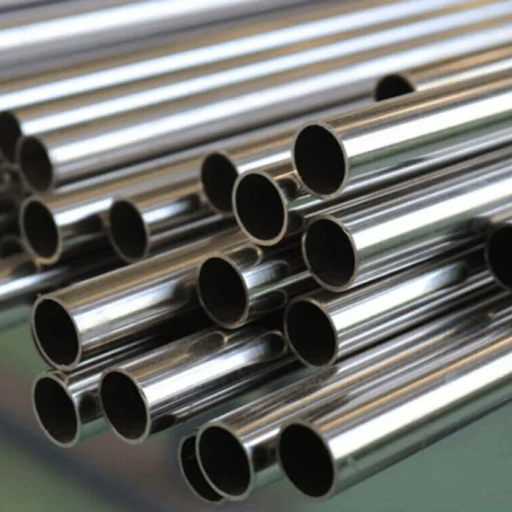
- Corrosion Resistance
The highly effective attribute of resistance afforded by 304 stainless steel makes it the most preferred metal in environments with high moisture content, such as chemical and temperature conditions.
- Durability
304 Stainless Steel is a metal renowned for its strength and outstanding durability when used in extreme work conditions.
- Versatility
It is incredibly versatile and can be used in many applications, ranging from industrial tissues to food grades or medical applications and the very heavy structural parts as well.
- Hygiene
The smooth non-porous substance means it will be a hassle to keep it clean, and this ensures that it won’t be contaminated as floored by standard pure media in the strict rules of a clean environment.
- Cost-Effectiveness
Durable and exceptionally efficient, 304 stainless steel does not cost as much as 316 stainless steel or other higher-end alloys while providing the same degree of operation.
Cost-Effectiveness of 304 Stainless Steel
The economic efficiency of 304 stainless steel is based on a combination of three factors: its high state of purity, a built-in ability to produce from locally available materials or in a specific credit market and the lower initial cost as compared to that of the other steel-made gate valve systems. Additional alloying of the steel enables the cutback price due to chromium along with nickel, the main constituents of the steel, while at the same time increasing its resistance to corrosion, thus cutting down the costs. Moreover, such properties as good strength and ductility enable engineers to maintain structural integrity with a lesser thickness of the material, hence saving the cost on the area of the material.
Moreover, 304 stainless steel is known to have a long life and cheap to maintain in its lifecycle cost. Unlike some inexpensive materials characterized by frequent replacements and requiring high levels of maintenance in order to last longer, 304 stainless steel does not require so much, and this serves to minimize the costs in the long run. This is further supported by blatant evidence from industries that have relied on the use of 304 stainless steel, which has reduced expenses due to its convenient resistance to the effects of rust and chemicals even in the presence of average corrosivity.
However, 304 stainless steel remains consistently one of the most cost-effective materials for applications necessitating both value for money and operational performance.
Recyclability and Environmental Impact
304 is a type of steel that is highly valued due to the ease and simplicity in recycling it, where currently about 85- 90% of the stainless steel is reclaimed as scrap in all corners of the world. Considering the high intensity of recycling, the material can still be successfully entrusted to reprocessing practices without its mechanical and structural features impaired, thereby maintaining a continuous flow of material development. This process also requires less energy compared to producing virgin steel and produces fewer emissions of greenhouse gases. In addition to this, the recycling and utilization of 304 stainless steel plays a part in saving natural resources, as there is less demand on raw materials such as those containing the mineral chromium and nickel.
Maintenance and Care for 304 Stainless Steel
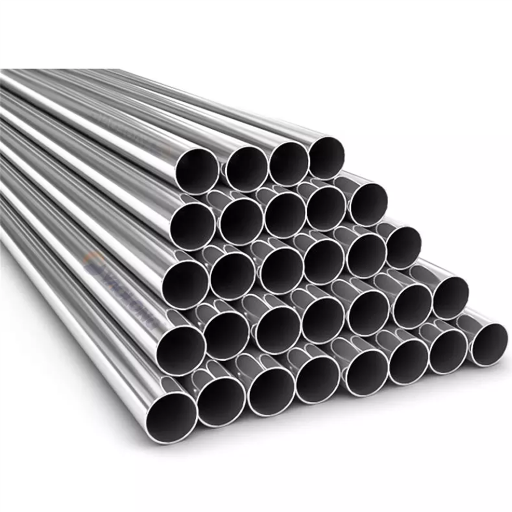
- Regular Cleaning
Clean the surface with a mild detergent and warm water; do not use heavy abrasives or chlorinated cleaning solutions, as they can damage the protective layer of the metal.
- Preventing Corrosion
To prevent corrosion, ensure any materials like salt and dirt, especially in industry or coastal areas, are washed as soon as possible,
- Avoiding Surface Damage
While cleaning, opt for smooth fabric or sponges instead of hard materials that could leave a mark on the steel surfaces because of their rough texture.
- Periodic Inspection
Check for any stains or scratches on the stainless steel surfaces from time to time and make sure to maintain the quality of it by rectifying anomalies.
- Polishing
To obtain a beautiful finish, use a gentle stainless steel cleaning agent or a specific non-abrasive finish protector.
Practical Maintenance Tips
- Regular Cleaning with Appropriate Solutions
Cleaning the stainless steel requires the use of a mild detergent mixed with warm water, do not use any cleaner containing chlorides, as they tend to wear off the steel’s stainless abilities with time. Cleaning is conducted on a weekly basis in busy areas or places with high moisture in order to maintain the surface’s look.
- Avoiding Contact with Harsh Chemicals
Limit the exposure of the given materials to strong chlorinated or caustic solutions that may lead to surface attacks like pitting. Any stainless steel in contact with these solutions requires immediate washing with clean water.
- Maintaining Optimal Environmental Conditions
Minimize the risk of corrosion by increasing the ventilation rates or decreasing the exposure to moist or salty air, which facilitates the abrasion. Stainless steel that is applied along coastlines or in industrial places should be cleaned and checked more frequently.
- Using Dedicated Maintenance Tools
Have specific cleaning equipment allocated for stainless steel purposes so as to avoid contamination zones arising from other materials, such as carbon steel with oxide components. Microfiber cloths or stainless steel pads should be used for the cleaning process.
- Addressing Stains and Minor Scratches Promptly
How to Maintain Appearance and Extend Lifespan
Keeping the stainless steel unharmed is not only a question of attractiveness. It is also a source of good use for quite a long period. Fortunately, cleaning can be undertaken on a regular basis in order to remove built-up filth, fat, and grime. When this is done correctly, the surfaces should be wet and appropriately wiped using a simple solution of dishwashing soap and water. Dry in a manner that ensures the cloth does not leave scratches and ‘water marks’ during that period.
To avoid rust, attention must be given not to subject the general surface of a stainless steel worktop to some aggressive substances, such as chlorine and bleach, for example, owing to their capacity to affect the protective oxide layer. However, if they accidentally come into contact, the affected surface should be rinsed using water, and finally, it should be fully dried. In addition, environmental conditions such as high moisture in the air and stagnant water are also known to hasten rusting. Placing such components in areas with good air circulation and wiping moisture off them can also help reduce these rusting risks.
It also protects against fingerprints and smudges when applied. Also the use of a specialized stainless steel polisher will aid in removing slight stains if any. The polished finish also tends to be streak-free. Such periodic applications maintain the surface by preventing any additional wear and tear or contamination. When appropriate cleaning techniques and regular care of the polished stainless steel surfaces are observed, these surfaces can very well hold their value and appearance for a number of years.
Comparing Stainless Steel Grades
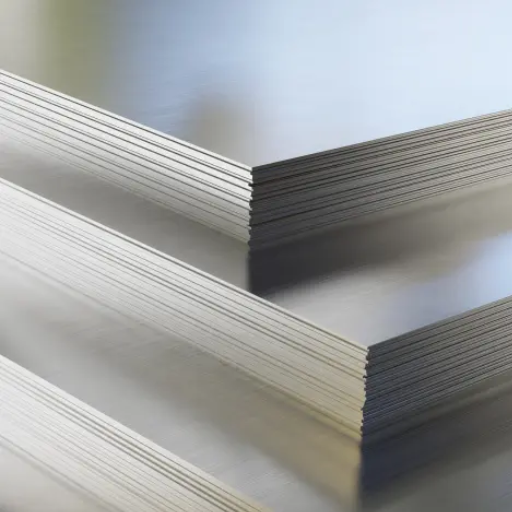
There are different grades of stainless steel, which are uniquely suited for certain uses and environmental conditions. The most prevalent ones incorporate 304, 316, and 430 with their differences primarily in composition and application:
- Grade 304: It has the most applications due to its 18% chromium and 8% nickel content, which enables high levels of durability and corrosion resistance. The kitchen systems, cookware, and food processing equipment are some of the end products.
- Grade 316: This grade is in the group AISI. AISI 316 has molybdenum inclusions, which provide more effective corrosion resistance and strength against pitting in industry sectors such as enterprises using corrosive solutions and marine environments. In certain cases, it is well known as one of the medical and chemical equipment compositions as well as one of the stainless steels used in salt water.
- Grade 430: This form of stainless steel material is ordinarily used for decorative purposes among many other applications. Ferritic stainless steel grade 430 is a cost-effective material with basic properties and it is also free from nickel. Its typical uses include decorative finishes such as cladding and interior walls, as well as appliances, whereby the adverse conditions do not exist.
Difference Between 304 and 316 Stainless Steel
|
Parameter |
304 Stainless Steel |
316 Stainless Steel |
|---|---|---|
|
Chemical Composition |
Contains 18% chromium, 8% nickel |
Contains 16% chromium, 10% nickel, 2% molybdenum |
|
Corrosion Resistance |
Moderate resistance to corrosion |
Superior resistance, especially to chlorides and salt |
|
Strength and Durability |
High strength, durable |
Higher tensile strength, greater durability |
|
Cost |
More affordable |
Higher cost due to added molybdenum |
|
Weldability |
Excellent weldability |
Excellent weldability |
|
Temperature Resistance |
Withstands high temperatures well |
Withstands high and extreme conditions |
|
Common Uses |
Appliances, kitchenware, utensils |
Marine, chemical, and pharmaceutical industries |
|
Resistance to Pitting |
Lower resistance to pitting and crevice corrosion |
Greater resistance to pitting and crevice corrosion |
|
Surface Finish Options |
Wide range of finishes |
Wide range, similar to 304 |
|
Magnetic Properties |
Non-magnetic in annealed state |
Non-magnetic in annealed state |
304 vs 430: Understanding the Differences
|
Key Point |
304 Stainless Steel |
430 Stainless Steel |
|---|---|---|
|
Corrosion Resistance |
Excellent |
Moderate |
|
Cost |
Higher |
Lower |
|
Weldability |
Excellent |
Limited |
|
Formability |
Superior |
Moderate |
|
Durability |
High |
Moderate |
|
Temperature Resistance |
Suitable for high temperatures |
Performs poorly at high temperatures |
|
Chromium Content |
18-20% |
16-18% |
|
Nickel Content |
8-10.5% |
None |
|
Magnetic Properties |
Non-magnetic (annealed) |
Magnetic |
|
Maintenance |
Easy to maintain |
Requires more care |
|
Common Applications |
Appliances, kitchenware, auto trim |
Linings, automotive mufflers |
|
Availability |
Widely available |
Readily available |
|
Environmental Resistance |
High in harsh environments |
Lower in harsh environments |
|
Hardness |
Lower |
Higher |
|
Appearance |
Bright, polished finish |
Dull, matte finish |
Choosing the Right Stainless Steel Grade for Your Needs
Moreover, there are budgetary considerations to make. Austenitic alloys, though more costly, are more ductile and suited to welding and formability. In contrast, ferritic stainless steels are affordable without sacrificing performance against low to moderate corrosion issues.
Reference Sources
-
- Key Findings: This study examines the mechanical properties and microstructural changes in 304 stainless steel after prolonged exposure to high temperatures (593°C) and stress (117 MPa) over approximately 8.5 years. It highlights the effects of elements like boron, phosphorus, and titanium on the material’s performance.
-
- Key Findings: This paper focuses on the aging effects on 304 stainless steel over a 7-year period at elevated temperatures (593°C). It provides insights into the degradation mechanisms and the role of specific alloying elements in maintaining material integrity.
-
“Oxidation studies on 304 stainless steel”
- Key Findings: This research investigates the oxidation behavior of 304 stainless steel at temperatures ranging from 500°C to 1150°C under low oxygen pressure (0.1 atm). It concludes that the reaction kinetics and oxide layer formation are critical to the material’s performance in high-temperature environments.
Frequently Asked Questions (FAQs)
Q: What is the chemical composition of 304 stainless steel?
A: Type 304, also known as AISI 304, is primarily composed of iron, with chromium (typically 18%) and nickel (around 8%) being the key alloying elements. The chromium content provides excellent corrosion resistance, while the nickel enhances the structural stability of the alloy. This composition makes 304 stainless steel widely used in various applications, including food handling and processing environments. Additionally, 304L is a low-carbon variant that minimizes the risk of carbide precipitation during welding, which is crucial for applications requiring high corrosion resistance.
Q: What are the mechanical properties of 304 stainless steel?
A: The mechanical properties of 304 stainless steel include a tensile strength of approximately 515 MPa and a yield strength of around 205 MPa. These properties make it a suitable choice for applications where strength is required, especially in environments exposed to corrosive media. The alloy also exhibits good ductility, which allows for ease of fabrication. Moreover, the modulus of rigidity for 304 stainless steel is relatively high, ensuring that it maintains its shape under stress. Cold working processes can enhance these properties further, making 304 an excellent choice for various structural applications.
Q: How does 304 stainless steel compare to 316 stainless steel?
A: The primary difference between 304 and 316 stainless steel is the addition of molybdenum in 316, which significantly enhances its resistance to pitting and crevice corrosion in chloride environments. While both grades have similar mechanical properties, 316 is often preferred for marine applications or environments exposed to saltwater. In contrast, 304 stainless steel is widely used in food and beverage processing due to its excellent corrosion resistance and ease of fabrication. When considering 304 vs 316, the choice often depends on the specific application requirements and the presence of corrosive elements.
Q: What is the corrosion resistance of 304 stainless steel?
A: 304 stainless steel is known for its excellent corrosion resistance, particularly in environments that do not involve exposure to harsh chemicals. Its resistance to oxidation and corrosion makes it suitable for a wide range of applications, including food processing and medical equipment. However, 304 stainless steel cannot withstand highly corrosive environments, such as those with high chlorides, as effectively as 316 stainless steel. For applications requiring superior corrosion resistance, selecting 316 or considering 304L can be beneficial. Overall, 304 stainless steel offers a reasonable balance between corrosion resistance and cost, making it a common choice for many industries.
Q: What are the fabrication methods for 304 stainless steel?
A: Fabrication of 304 stainless steel can be achieved through various methods, including welding, machining, and forming. Due to its excellent machinability and ease of fabrication, 304 is often used with tools dedicated to stainless steel materials. Welding of 304 stainless steel is straightforward; however, it is recommended to use filler materials that match its composition to avoid cross-contamination of stainless steel. For applications where high strength is required, heat treatment may be employed to enhance specific properties. The versatility in fabrication techniques allows for the creation of complex shapes and structures, making 304 a popular choice in various industries.

